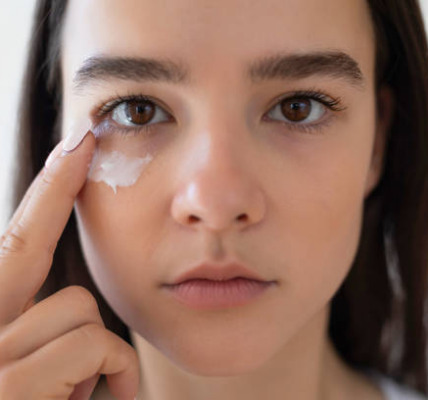Managing oily skin can sometimes feel like a never-ending battle. If you’ve been struggling with excess oil, shine, and breakouts, you’re not alone. Many individuals face the challenge of oily skin, which can be both frustrating and embarrassing. In this guide, we aim to provide insightful information and practical solutions for managing and alleviating the symptoms associated with oily skin. By exploring various factors—from underlying causes to effective treatments—you can better navigate your journey towards a clearer, more even complexion. So let’s dive in and equip you with the knowledge you need!
Understanding Oily Skin

Oily skin is primarily characterized by an overproduction of sebum, the natural oil our skin produces. Sebum, while crucial for keeping the skin moisturized and protected, can lead to problems such as clogged pores if produced in excess. This section will explore the various reasons why your skin may become oily, shining a light on genetic, hormonal, and environmental factors. Moreover, understanding these elements will help in tailoring a skincare routine that suits your specific needs. It’s also essential to consider how skin conditions may vary from person to person, and the role of external influences such as climate and pollution.
Sebum serves multiple purposes, including shielding the skin from dehydration and harmful bacteria. However, when produced in excess, it can create an oily appearance, leading to acne and other skincare issues. The key lies in achieving a balance; while you want your skin to be adequately hydrating, it should not appear excessively shiny. Additional causes for the overproduction of sebum include stress, poor diet, and changes in hormone levels, particularly during puberty or menstruation. Identifying triggers specific to your lifestyle can empower you to manage oiliness effectively.
Signs and Symptoms of Oily Skin

Recognizing oily skin is crucial in developing an appropriate skincare regimen. A shiny complexion, enlarged pores, and frequent acne breakout are some of the most common indicators. Many individuals find that their makeup doesn’t stay in place, leading to frustration throughout the day. This section aims to provide a deeper understanding of these symptoms, which can help tailor a personalized approach to skincare. Some people may even notice a thick and greasy texture as a by-product of excessive oil. To better illustrate the features of oily skin, consider this list of signs:
- Shiny appearance, especially in the T-zone
- Enlarged or clogged pores
- Frequent occurrence of acne and blemishes
It is essential to distinguish oily skin from other skin types, such as dry or combination skin. By understanding the differences, you can enhance your skincare routine effectively. For instance, individuals with combination skin may experience dryness on their cheeks while maintaining oiliness in their T-zone. Knowing your specific skin type helps you choose products that best cater to your needs. The wrong product can exacerbate skin conditions, making it vital to understand the nuances of your skin type.
Effective Skincare Routine for Oily Skin
An effective skincare routine serves as a cornerstone for managing oily skin. It should include steps that effectively remove excess oil while ensuring the skin remains hydrated. Here’s a straightforward table outlining key components of a skincare routine and their purposes:
| Step | Product Type | Purpose |
|---|---|---|
| Cleansing | Gel or Foaming Cleanser | Removes excess oil and impurities |
| Exfoliation | Chemical Exfoliant | Unclogs pores and prevents breakouts |
| Moisturizing | Oil-Free Moisturizer | Hydrates without adding excess oil |
Cleansing
Choosing a gentle yet effective cleanser is crucial. Look for products that contain salicylic acid or charcoal, as they help absorb excess oil without stripping the skin of its moisture. Avoid overly harsh cleansers; they might produce a rebound effect, causing your skin to produce even more oil. Make cleansing a part of your morning and evening routine to maintain a fresh complexion throughout the day.
Exfoliation
Exfoliating regularly is crucial for oily skin to prevent clogged pores and maintain a smooth texture. Both physical and chemical exfoliants can offer benefits, but it’s essential to find a balance. Aim to exfoliate two to three times a week, adjusting based on your skin’s sensitivity. Ingredients like glycolic acid and beta hydroxy acid (BHA) can be particularly effective for oily skin. Furthermore, employing a soft touch will help prevent irritation and maintain your skin’s resilience.
Lifestyle Changes to Reduce Oily Skin
In addition to an effective skincare routine, consider implementing lifestyle changes to minimize oily skin. The foods you consume, your hydration levels, and stress management directly impact your skin’s oil production. Here are some practical tips for dietary changes:
- Incorporate more fruits and vegetables
- Reduce processed foods and sugary drinks
- Stay hydrated with plenty of water
Certain foods can trigger oil production, making it essential to evaluate your diet. For example, dairy products and high-glycemic foods have been linked to increased oiliness and acne. Conversely, a balanced diet rich in vitamins, minerals, and antioxidants may yield beneficial results. Moreover, maintaining proper hydration supports overall skin health and oil regulation. Always consider how your dietary choices may affect your complexion in the long run.
Treatments and Products for Oily Skin
Alongside a solid skincare regimen, various treatments and products can assist in managing oily skin effectively. Over-the-counter options that contain salicylic acid or retinoids can be particularly beneficial. For those facing more severe issues, consulting a dermatologist may lead to professional treatments. Here are some recommended ingredients to consider:
- Salicylic Acid
- Niacinamide
- Retinoids
When home treatments aren’t enough, seeking professional help can be a wise decision. Options like chemical peels or laser treatments can target excess oil and minimize breakouts. It’s essential to discuss your concerns with a dermatologist who can design a treatment plan tailored to your skin’s specific needs. Also, be aware of potential side effects by ensuring you have an open dialogue about possible outcomes. Professional guidance can empower you with strategies tailored to your condition.
Conclusion
Managing oily skin is a holistic endeavor that combines effective skincare practices with lifestyle and dietary changes. Understanding the causes of oily skin, recognizing its symptoms, and developing a tailored skincare routine can significantly improve your complexion. Furthermore, professional treatments can complement your efforts when necessary. Armed with the information gathered from this guide, you can take the steps needed toward achieving a clear, healthy complexion that radiates confidence.
Frequently Asked Questions
- What causes oily skin? Oily skin can be caused by genetic factors, hormonal changes, certain medications, or environmental conditions.
- Can oily skin lead to acne? Yes, excessive oil can clog pores and lead to acne development.
- Is it okay to use oil-based products on oily skin? It’s best to avoid heavy oil-based products as they can exacerbate oiliness. Opt for lightweight, non-comedogenic options instead.
- How often should I cleanse my oily skin? Cleansing twice a day is generally recommended to keep excess oil at bay.
- Are there any home remedies to help with oily skin? Yes, remedies like clay masks and aloe vera can be helpful in managing oil production.









